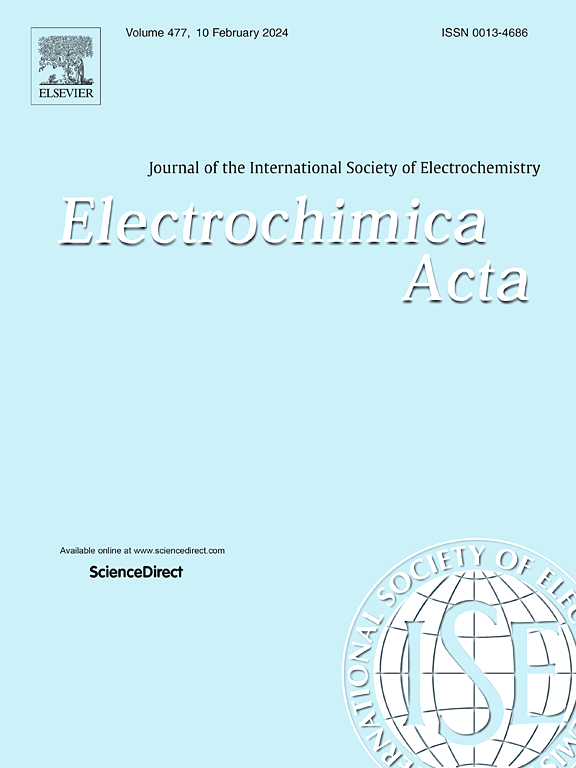含Co(NO3)2的复合聚合物电解质可以在锂金属电池中构建富li3n界面层
IF 5.5
3区 材料科学
Q1 ELECTROCHEMISTRY
引用次数: 0
摘要
锂金属电池(lmb)在能量存储应用中具有重要的前景,但它们受到低离子电导率和电解质严重界面问题的阻碍。在本研究中,我们开发了Co(NO3)2@CPEs系统来解决这些挑战。通过在PEO基体中加入Co(NO3)2添加剂和LLZTO纳米颗粒,我们旨在减少PEO的结晶,增强Li+的输运。此外,这种方法促进了富li3n固体电解质间相(SEI)层的形成。研究表明,Co(NO3)2的加入促进了Li3N、LiF和Li2Co的生成。这些无机成分显著改善了锂离子的输运,有助于防止金属锂的不均匀沉积。Co(NO3)2@CPEs在60℃时离子电导率为4.96 × 10-4 S·cm-2(在30℃时离子电导率为2.4 × 10-5 S·cm-2), Li+迁移数为0.41,电化学窗口为4.5 V。此外,该锂对称电池在0.2 mA·cm-2电流密度下可稳定循环800 h。而以磷酸铁锂(LiFePO4)为正极的锂金属电池则具有良好的倍增能力和循环稳定性,在0.5℃下可循环200转,初始比容量为148.08 mAh·g-1。本文章由计算机程序翻译,如有差异,请以英文原文为准。

Composite polymer electrolytes containing Co(NO3)2 can construct Li3N-rich interfacial layers in lithium-metal batteries
Lithium metal batteries (LMBs) hold significant promise for energy storage applications, yet they are hindered by low ionic conductivity and severe interfacial issues with the electrolyte. In this study, we developed a Co(NO3)2@CPEs system to address these challenges. By incorporating Co(NO3)2 additives and LLZTO nanoparticles into the PEO matrix, we aimed to reduce PEO crystallization and enhance Li+ transport. Additionally, this approach facilitated the formation of a Li3N-rich solid electrolyte interphase (SEI) layer. The study demonstrate that the inclusion of Co(NO3)2 promotes the generation of more Li3N, LiF, and Li2Co. These inorganic components significantly improve Li+ transport and help prevent the uneven deposition of lithium metal. Co(NO3)2@CPEs has an ionic conductivity of 4.96 × 10-4 S·cm-2 at 60°C (ionic conductivity of 2.4 × 10-5 S·cm-2 at 30°C), a Li+ migration number of 0.41, and an electrochemical window of 4.5 V. In addition, the lithium-symmetric battery can be stably cycled for 800 h at a current density of 0.2 mA·cm-2. The lithium metal battery with lithium iron phosphate (LiFePO4) as the cathode, on the other hand, has good multiplication capability and cycling stability, in which it can be cycled for 200 revolutions at 0.5 C and has an initial specific capacity of 148.08 mAh·g-1.
求助全文
通过发布文献求助,成功后即可免费获取论文全文。
去求助
来源期刊

Electrochimica Acta
工程技术-电化学
CiteScore
11.30
自引率
6.10%
发文量
1634
审稿时长
41 days
期刊介绍:
Electrochimica Acta is an international journal. It is intended for the publication of both original work and reviews in the field of electrochemistry. Electrochemistry should be interpreted to mean any of the research fields covered by the Divisions of the International Society of Electrochemistry listed below, as well as emerging scientific domains covered by ISE New Topics Committee.
 求助内容:
求助内容: 应助结果提醒方式:
应助结果提醒方式:


